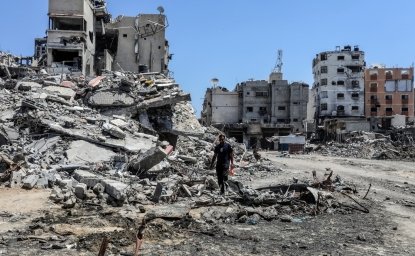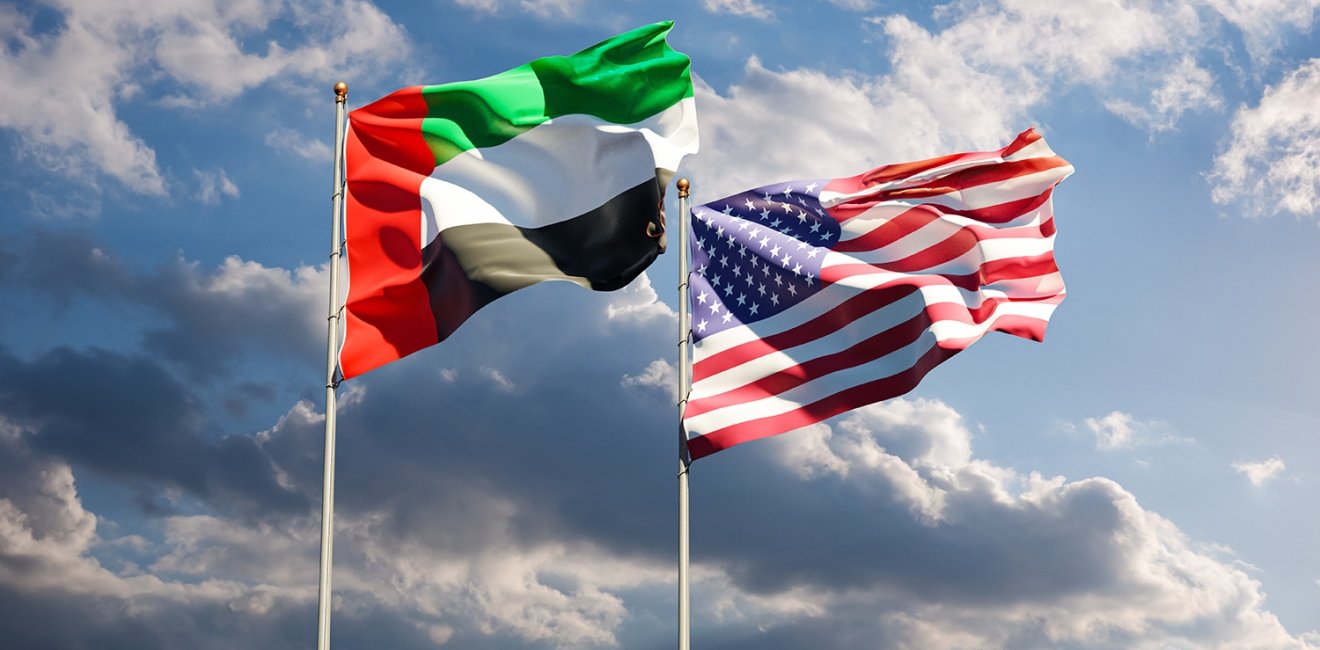The United Arab Emirates is making a bold bid to become the most favored Arab nation of the United States with indispensable help from the outgoing Trump administration – anxious to tie up multi-billion arms deals before it leaves office January 20. Its decision to provide America’s most advanced warplane, the F-35 Lightning, to the UAE highlights the waning of Saudi Arabia as the linchpin of the U.S. security architecture for the Persian Gulf, a role the Saudi kingdom has played for decades.
The F-35 sale is the first time any Gulf Arab nation other than Saudi Arabia has been allowed access to such cutting-edge American military technology. In this sense, the stealth F-35 warplane carries as much political as military significance, particularly since a Saudi request to purchase the prized aircraft has so far gone unanswered.
This may change, however, if the UAE succeeds in overcoming varying degrees of opposition from Israel, Congress, and myriad U.S. human rights groups. They have 30 days from the time Congress was formally notified on November 10 to block the sale by a resolution. But Trump could declare a “national emergency” and go ahead with the sale in any case.
The last comparable battle royal in Washington over arms sales to America’s Arab partners took place in 1981 and involved providing Saudi Arabia with the Airborne Warning and Control System (AWACS)
The last comparable battle royal in Washington over arms sales to America’s Arab partners took place in 1981 and involved providing Saudi Arabia with the Airborne Warning and Control System (AWACS), then the most sophisticated U.S. aircraft for managing warfare. In that case, President Reagan faced off against Israeli Prime Minister Menachem Begin who came to Washington to lobby Congress against the sale. Reagan had to commit his personal prestige and much political capital to push the sale through Congress by a narrow margin. The Trump administration has bowed to opposition against providing the UAE with the Growler electronic warfare plane but dropped longstanding restrictions on the foreign sale of armed Reaper drones for the sake of their sale to the UAE. Altogether, it has proposed a $23 billion package of warplanes, drones and munitions for the Emirates that will bind the two countries closer together than ever before.
The UAE government issued a white paper in October to justify its purchase of 50 F-35s – the same number Israel was first scheduled to receive – by claiming it has now become “America’s most capable and dependable military partner in the Arab world.” It pointed to thirty years of close military cooperation including helping the United States overthrow the Taliban regime in Afghanistan and participation in six U.S.-led counterterrorism and peacekeeping mission until today.
Israel, which already has two F-35 squadrons in service, first expressed opposition to the UAE obtaining the same warplane, arguing it would compromise the “Qualitative Military Edge” over its Arab neighbors that U.S. law is bound to uphold. Its attitude changed, however, after President Trump declared he had “personally no problem” with the F-35 sale to the UAE and receiving guarantees its sacrosanct QME will be preserved. This will reportedly involve providing Israel with yet more F-35s as well as giving it access to highly classified U.S. satellite information used to track missiles.
The UAE white paper seeks to assuage concerns over Israel losing its QME by pointing out its previous purchase of U.S. F-16s was done in such a way as to explicitly preserve it. The document also disclosed secret UAE-Israeli military cooperation, stating Israel now “supplies key upgrades” on those F-16s, adding, ”The UAE anticipates that Israel would provide enhancements as well on the UAE’s F-35s.”
How and why the Trump administration decided to favor the UAE over Saudi Arabia as the first Arab nation allowed to purchase the F-35 is a complicated story. The Emirates has slowly become a valued fighting partner of the Pentagon in conflicts around the world while Saudi Arabia has struggled to project itself as a regional military superpower. Ironically, the Saudi-led invasion of Yemen in 2015, intended to crush Iranian-backed Houthi rebels in a show of Saudi military power, has led instead to a demonstration of superior UAE military skills, particularly by its ground forces.
Another explanation for the Trump administration favoring the UAE is that the de facto ruler of Saudi Arabia, Crown Prince Mohammed bin Salman, has become a pariah in Washington ever since Jamal Khashoggi, the prominent Saudi journalist and Washington Post commentator, was brutally murdered inside the Saudi consulate in Istanbul in October 2018. The CIA concluded with “medium to high confidence” that the crown prince ordered the killing. Any attempt by Saudi Arabia to acquire the F-35 in the current atmosphere would likely raise a storm of protest. This is even more likely unless Saudi Arabia formally normalizes relations with Israel, a precondition set by some in Congress who oppose the sale.
The UAE is also far better placed than Saudi Arabia to take on opposition to the sale in Washington because it can point to a decades-long history of operating alongside American forces in conflicts across the Middle East
The UAE is also far better placed than Saudi Arabia to take on opposition to the sale in Washington because it can point to a decades-long history of operating alongside American forces in conflicts across the Middle East; from the Gulf War of 1990-91 against Iraq’s occupation of Kuwait to its surprising involvement in Afghanistan. The UAE sent 250 soldiers and six F-16s to help U.S. forces overthrow the Taliban government in 2001 in retaliation for protecting Osama bin Laden as he plotted the 9/11 terrorist attacks on the United States. The UAE was the only Arab country to join the U.S.-led coalition there and the only non-American Air Force beside Australia’s to provide close-in air support for U.S. soldiers.
Starting in 2002, the UAE began allowing the U.S. Air Force to use its Al-Dhafra Air Base as a regional operations center. Squadrons of F-35 warplanes have already been flying in and out since April 2019 to support U.S. Central Command missions in Syria and Afghanistan. In contrast, Saudi Arabia insisted all U.S. forces leave the kingdom after the invasion of Iraq in 2003 to overthrow Saddam Hussein, though it has now welcomed them back after Iran bombed two of its oil facilities in September 2019.
The UAE can hardly match Saudi Arabia in overall military power or geopolitical assets. It has a tiny population of citizens—one million out of ten million residents—and no strategic depth while Saudi Arabia has 20 million nationals and occupies most of the entire Arabian Peninsula. The UAE army has only 63,000 active personnel while Saudi Arabia’s is twice that size.
The biggest difference is in the fighting spirit of the two Gulf Arab monarchies. Former Secretary of Defense and U.S. Central Command chief, James Mattis, dubbed the UAE a veritable “Little Sparta.” On the other hand, the Yemen war has shown Saudi Arabia’s army to be a chronically underperforming force. Left unsaid is the fact Saudi kings have traditionally preferred it that way to avoid the military becoming a threat to the House of Saud.
The key to the UAE’s rise as a military power is doubtlessly Sheikh Mohammed bin Zayed al Nahyan, 59, the crown prince of Abu Dhabi, the largest of the seven confederated emirates and its de facto capital. He is also deputy commander of the UAE’s armed forces with a long career in military affairs starting at Sandhurst, Britain’s most prestigious military academy. By contrast, the Saudi crown prince, Mohammed bin Salman, 35, also de facto ruler of his kingdom, has had no military training or experience, though he has acted as defense minister ever since his father became king in January 2015.
It was only the Saudi-led invasion of Yemen in March 2015 that finally drew the world’s attention to the UAE’s surprisingly effective fighting prowess
It was only the Saudi-led invasion of Yemen in March 2015 that finally drew the world’s attention to the UAE’s surprisingly effective fighting prowess, coordinating closely with the United States in hunting down al-Qaeda terrorists. The fact that the Houthis were forced to retreat from most of southern Yemen was due to the UAE military and the tens of thousands of Yemeni tribesmen paid and trained as its proxy army. It has subsequently expanded its presence to the strategically-located Socotra Island close to international oil shipping lanes through the Bab el-Mandeb strait.
Sheik Zayed has proven a highly ambitious leader determined to project the UAE not only as a military power but also the Arab world’s leader in space exploration and development of civilian nuclear power. In July, the UAE launched a mission, the Hope Probe, to orbit around Mars; built by Emirati and Japanese scientists and carried on a Russian rocket. It now plans a moon mission by 2024. It also was the first Arab nation to build commercial nuclear power plants, the first of which began producing electricity in August.
Approval of the sale of F-35 warplanes and Reaper drones to the UAE is certain to open a Pandora’s Box of demands for the same weapons from other U.S. Arab partners and tens of billions of dollars more in business for American defense contractors. Neighboring Qatar, which hosts the U.S. Central Command’s regional headquarters, has already formally applied and Saudi Arabia doubtlessly will eventually. Egypt, which received $1.3 billion annually in U.S. military grant aid, may well follow suit.
These Trump-engineered arms deals will serve to cement the United States’ military presence in the region for decades more to come, belying the current widespread impression of an imminent American disengagement from the wars and conflicts of the Middle East.
The views expressed in this article are those of the author and do not reflect an official position of the Wilson Center.
Author

Former Washington Post Middle East Correspondent

Middle East Program
The Wilson Center’s Middle East Program serves as a crucial resource for the policymaking community and beyond, providing analyses and research that helps inform US foreign policymaking, stimulates public debate, and expands knowledge about issues in the wider Middle East and North Africa (MENA) region. Read more

Explore More
Browse Insights & Analysis
Promoting Convergence in US-Brazil Relations

360° View of How Southeast Asia Can Attract More FDI in Chips and AI

Israel Escalates Attacks in Gaza: What’s Next?

